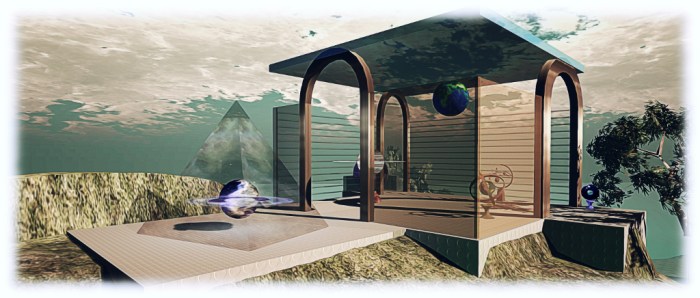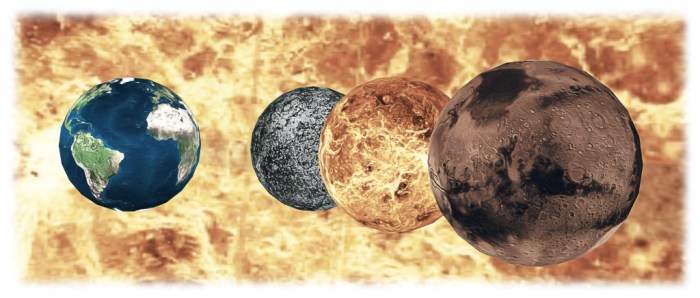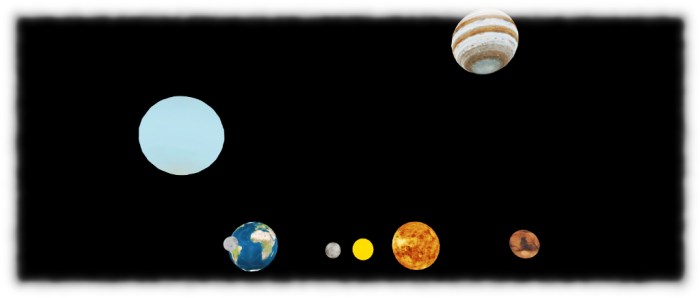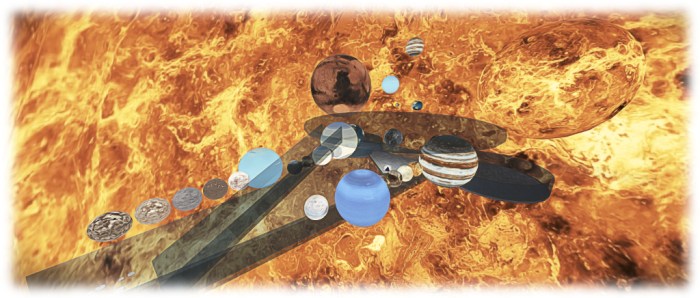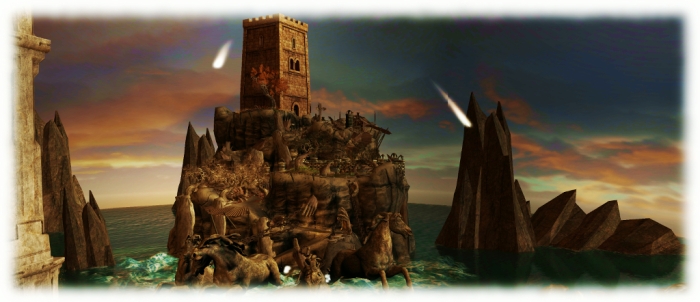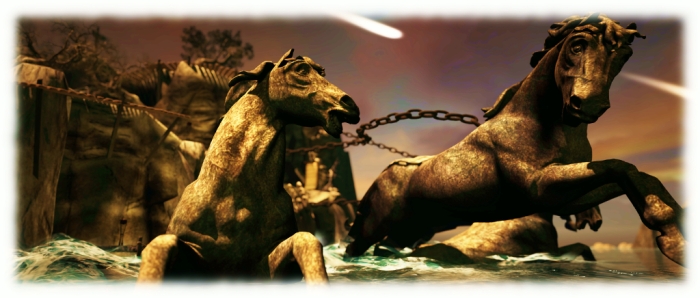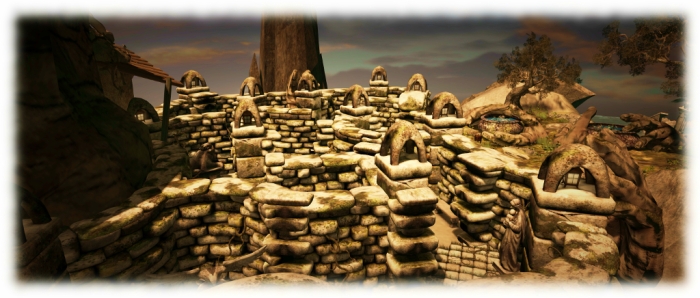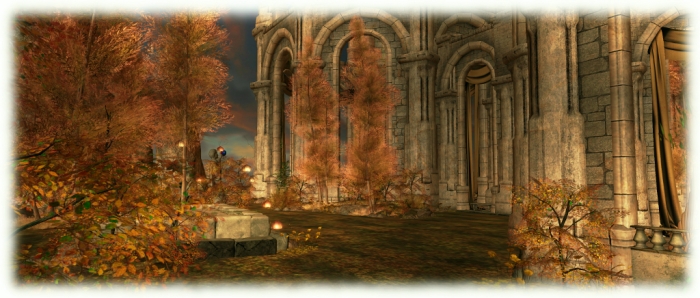It’s time to kick-off a week of story-telling in voice, brought to our virtual lives by the staff and volunteers at the Seanchai Library. As always, all times SLT, and events are held at the Library’s Second Life home at Bradley University, unless otherwise indicated.
Sunday, August 14th
13:30: Tea Time at Baker Street
Tea-time at Baker Street returns for the summer, featuring a new location – 221B Baker Street at the University of Washington iSchool in Second Life, and a return to His Last Bow. 
A 1917 anthology of previously published Sherlock Holmes stories by Sir Arthur Conan Doyle, the volume originally comprised seven stories published by The Strand Magazine between 1908 and 1917. However, later editions of the book saw an eighth story included, The Adventure of the Cardboard Box, originally published in 1892.
In this episode, Holmes and Watson find their break in Cornwall interrupted, apparently by none other that Satan himself, in The Adventure of the Devil’s Foot.
Having gone to Cornwall on account of Holmes’ health, the two friends find their holiday interrupted by an unexpected visit by a local gentleman, Mortimer Tregennis, who is accompanied by the local vicar, Mr. Roundhay.
A distressed Tregennis reports how, after visiting his two brothers and his sister the previous evening, he had returned to their house in the morning to find all three still at the table where they’d all played whist the night before, his sister dead and his two brother apparently insane.
It had been the housekeeper who had first discovered the three, prior to Tregennis’ return, and she had fainted shortly after her discovery. Similarly, a doctor called to the house also collapsed for a short while. Tregennis, who has been living at the vicarage, is insistent what has happened is the work of the devil. Then, the following day, comes word that Mortimer Tregennis is also dead!
15:00: Magicland Storytime
It’s a Small World of Folktales at The Golden Horseshoe in Magicland Park with Caledonia Skytower.
Monday August 15th To the Vanishing Point
 Gyro Muggins continues his Monday Night treat of sci-fi with the conclusion of Alan Dean Foster’s To the Vanishing Point.
Gyro Muggins continues his Monday Night treat of sci-fi with the conclusion of Alan Dean Foster’s To the Vanishing Point.
When Frank Sonderberg insists his family make their annual vacation a road trip, his wife and kids are less than impressed. When he pulls over to the side of the road to pick up a beautiful young hitch-hiker apparently stranded in the desert, his wife definitely isn’t impressed.
But no sooner has the young woman, calling herself Mouse, boarded their motor-home than reality changes – and not necessarily for the better. Mouse, it turns out, is an alien on a mission and in picking her up, the family is inextricably joined with her in that mission. The universe, with all its many realities, is coming apart because the Spinner, the creator of those realities, has a headache. Mouse has the cure, but in order to give it, she must reach the Vanishing Point – and she needs the Sonderbergs to get her there.
Tuesday August 16th, 19:00: Blueberry Summers: Growing Up at the Lake
Kayden Oconnell reads from Curtiss Anderson’s classic coming of age memoirs.
 Born in 1928 in Minneapolis, Curtiss Anderson grew up in an extended family of Norwegian-Americans, among whom the highlight of the year was time spent among the lakes of northern Minnesota.
Born in 1928 in Minneapolis, Curtiss Anderson grew up in an extended family of Norwegian-Americans, among whom the highlight of the year was time spent among the lakes of northern Minnesota.
For young Curtiss, growing up in the 1930s and 1940s, these were especially idyllic years. Time spent in the farmhouse among this extended family presented an opportunity for him to escape the strained and troubled relationship he had with his parents and enjoy the company of others, aunts and uncles, the loving care offered by family friends Leigh and Clara, the companionship of the family dogs – and the chances to experience young love of his own.
Through the tales he relates of these summers, so Anderson also explores the notes and letters he wrote as a boy, carefully produced on a hand-me-down typewriter. Missives and notes which, although he never realised it at the time, were in fact his first forays into what would blossom in his adult life into a distinguished career as a writer, editor and publisher.
Wednesday August 17th: A Monstrous Regiment of Women (Mary Russell #2)
 Return to 221B Baker Street at the University of Washington’s iSchool, Second Life, for the latter-day adventures of Mr. Sherlock Holmes (retired) and his young orphaned protégé, Mary Russell, originally from the United States, as written by Laurie R. King.
Return to 221B Baker Street at the University of Washington’s iSchool, Second Life, for the latter-day adventures of Mr. Sherlock Holmes (retired) and his young orphaned protégé, Mary Russell, originally from the United States, as written by Laurie R. King.
Taking a trip to London, Mary encounters Veronica Beaconsfield, a friend from Oxford, who in turn introduces her to the charismatic and enigmatic Margery Childe, leader of something called “The New Temple of God.” Sect-like, and seemingly involved with the suffrage movement, the New Temple and its leader offer both curiosity and intrigue for Mary, who is not convinced either are entirely aboard board.
Her suspicions appear to be correct when several of the Temple’s wealthy young female volunteers and financial contributors are murdered. With Holmes keeping a watchful eye in the background, Mary turns her curiosity into an investigation; in doing so, she faces her greatest danger yet.
Thursday, August 18th
Seanchai is taking the evening off to allow Shandon attend a family birthday celebration.
Please check with the Seanchai Library SL’s blog for updates and for additions or changes to the week’s schedule.
The featured charity for July-August is WildAid: seeking to end the illegal wildlife trade in our lifetimes by reducing demand through public awareness campaigns and providing comprehensive marine protection.
